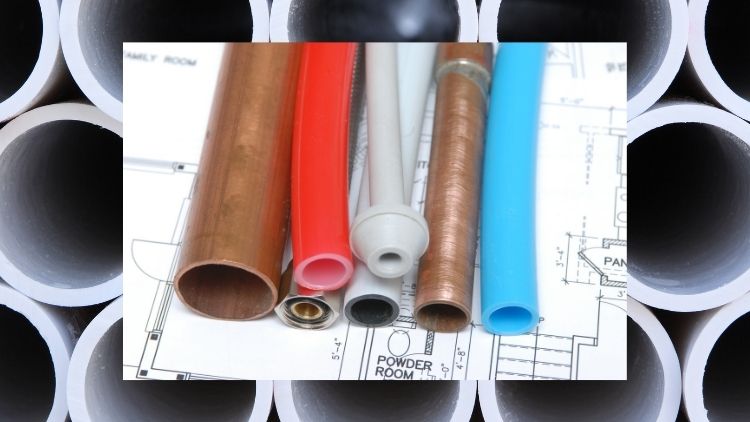If you’ve ever taken on a do-it-yourself (DIY) plumbing project, or if you’ve had us come out to help you, understanding your choices when it comes to a plumbing pipe is necessary. Stainless steel? Copper? PEX? It can all get a little confusing, and we want to help.
Here are different types of plumbing pipes and how they can help you complete your next project.
- Galvanized Steel
Galvanized steel is steel coated in zinc. The pipes appear thick and heavy with a gray or silver metallic exterior. Galvanized steel tubing is not widely used in modern new construction, but by the 1980s, it was common to find galvanized tubing.
Steel pipe is naturally heavy, so it’s more challenging to work with than other pipe materials. And while it is very durable, galvanized steel has a finite life. The zinc coating can ultimately break down and rust the pipe inside, leading to reduced water pressure and clogged water lines.
- Stainless Steel
Stainless steel describes steel that’s mixed with at least 10 percent chromium. It can look super neat and modern, but it’s costly. Unprotected steel tubing is used in areas that are subject to corrosion and near coastal areas. This type of pipe is both flexible and rigid and requires some special couplings to attach to other pipe types. It can be found in many different sizes and lengths.
- Copper
Copper pipes began appearing in homes around the 1930s but picked up popularity around the 1960s. Copper plumbing is usually thin walled, making it smaller in diameter than steel pipe. Over time, oxidation can change copper tubing from its original shiny rose-colored hue to a dark russet or green.
Copper is known for its resilience, heat tolerance, and long service life. One concern with copper, especially in older homes, is that the joints (where the pipes connect to various fittings) can contain lead solder. Another major disadvantage is that the long-term increase in copper’s market price as a commodity has made it a very expensive option.
- Cast Iron
Cast iron pipes are heavier than any other pipe typically used in water distribution systems or installed underground as the main pipe on drainage or sewer systems. (You probably recognize this material from your kitchen, too, as many people cook with cast iron pots and pans.) The smallest size usually made is a 4-inch pipe, large enough to be used in residential applications.
Plastic Pipe Systems
In contrast to copper pipes, limescale deposits and corrosion in modern sanitary pipes are no longer a significant problem. Experienced DIYers can now even get entire pipe system kits in hardware stores that were previously only supplied to professionals.
Such a system consists of multilayer plastic pipes in various diameters, suitable fittings, and corresponding accessories needed for installation in the heating and sanitary area. However, there are considerable differences between the individual types of pipe, which must be considered when selecting components and installing them.
- Conventional Plastic
Conventional plastic pipes are relatively rigid tubes suitable for adapting to spatial conditions such as angles and corners with fittings. The fittings of this system are also made of plastic and are glued to the pipe. The adhesive residues inevitably come into contact with the drinking water and can lead to taste and odor issues.
- PEX
Another type of plastic pipe is the PEX pipe, or cross-linked polyethylene, which is offered in rods and rings and screwed with brass fittings. Laying PEX in more extensive areas is no problem with this pipe. However, the pipe’s strong spring effect does not make installation easy, as the pipe must also be fixed.
Conventional and PEX pipes must be installed very generously due to their high linear expansion and require special sliding pipe clamps. If you’re using PEX for a heating project, it must be specially treated so that it’s oxygen-tight and therefore suitable for the heat.
There are many other types of pipes beyond what we’ve discussed here, such as ABS (acrylonitrile butadiene styrene) and PVC (polyvinyl chloride.) Each type of pipe is used for different applications, such as water supply, drain lines, or vent pipes.
Now that you know a little more about different types of plumbing pipes consider giving us a call at 317-271-5400 for some expert advice
Are you on Facebook? We are, too. Let’s be friends!


